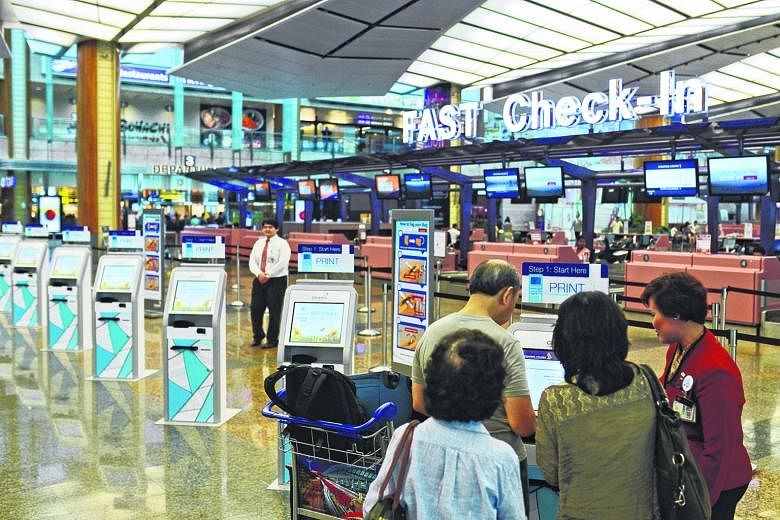Money is being pumped in to make flying less of a hassle for travellers as airports, including Changi, continue to invest in technology.
This year, global spending by major airports is expected to hit US$8.7 billion (S$12.2 billion), or 6.3 per cent of the industry's total revenues, compared to 5.8 per cent last year.
The amount will continue to increase, said Airports Council International (ACI) - a global trade body representing the world's airports - and IT firm Sita, which together asked more than 220 airports globally about their plans.
Self-service check-in kiosks, including those that print luggage tags, are already common at a growing number of airports, including Changi.
Other initiatives include ground sensors and beacons. These will allow airports to keep travellers informed via their mobile phones and other personal gadgets of travel time to an aircraft gate, for example, or waiting time for boarding.
As airports become bigger and passenger numbers rise, travellers will also need help to find their way around, noted the ACI-Sita survey.
Changi Airport's Terminal 5, for instance, will eventually be bigger than T1, T2 and T3 combined. The three terminals can now handle about 66 million passengers a year.
Sita's Asia-Pacific president, Mr Ilya Gutlin, told The Straits Times: "Airports are all moving towards offering a better passenger experience which is increasingly becoming a competitive advantage."
The rise of the middle class in China, India and elsewhere has also put new demands on airports.
He said: "The Chinese, for example, are travelling in droves, many for the first time; and a good number are not fluent in other languages. This is where technology comes in, with self-service kiosks, for example, that provide instructions in their own language which makes the whole experience less stressful.
"Studies have shown that when passengers are more relaxed, they tend to shop more - which is money for airports."
According to the ACI-Sita survey, eight in 10 airports plan to invest in beacons and other sensors over the next three years.
By 2018, 80 per cent of airports will use beacons to provide way-finding services and 74 per cent will provide notifications to passengers.
Mobile services are also on the rise with more than nine in 10 airports planning to provide an app for navigating the airport.
When it comes to self-service kiosks, airports have been expanding the functionality. Today, more than 40 per cent of airports have kiosks that can print bag tags to help passengers tag their own luggage before leaving them at drop-off points.
Regular traveller and businessman Arun Kumar, 50, said: "When you fly to Europe especially, it's machines everywhere and you hardly interact with anyone during the entire check-in and boarding process.
"It's quite convenient really. In Asia, it's less common but a growing trend."


